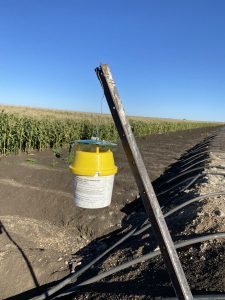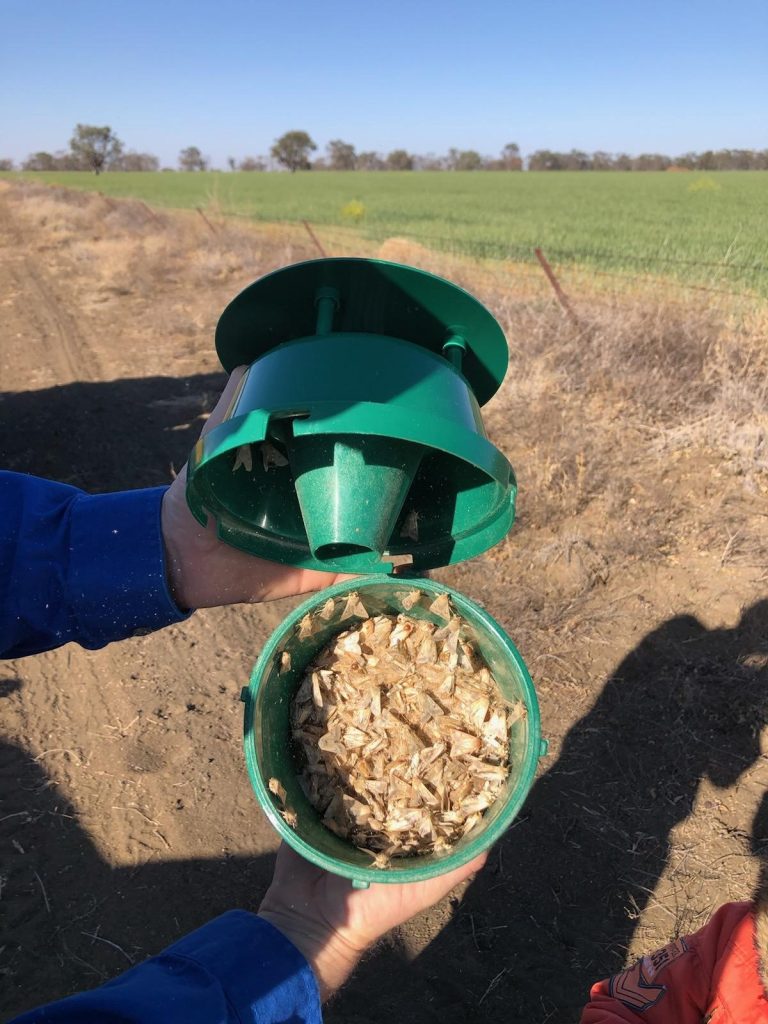The Field Crops Entomology Team at the Queensland Department of Agriculture and Fisheries has recently established a new moth pheromone trapping network to inform the northern grains industry of the seasonal population patterns of key caterpillar pests.

A bucket trap containing a pheromone lure.
A collaborative network of more than 25 growers and agronomists are assisting the monitoring of pheromone traps in 20 locations across 10 regions. Currently, traps are in place for the two Helicoverpa species (H. armigera and H. punctigera) and will be monitored until November.
Initial results of Helicoverpa counts are in for several sites and can be found on the Helicoverpa pheromone traps page.
Fall armyworm (FAW; Spodoptera frugiperda) trapping has also commenced.
It is important to note that H. armigera moths have been collected from all the established trapping sites through central and southern Queensland, indicating that H. armigera populations are likely to be present in late winter crops.
When considering management options, ensure your caterpillar infestation are correctly identified, because of insecticide resistance issues in H. armigera and FAW populations. For example, do not assume all helicoverpa-looking caterpillars in chickpea crops are H. punctigera!
For more information on spring caterpillar populations see the recent post by Melina Miles.

Large numbers of moths can be caught at some sites.
More trapping sites are due to come online soon, and our data will be updated weekly. The Beatsheet will also host NSW DPIRD’s pheromone trapping data.
The pheromone trapping network will be supported by the GRDC/DAF project DAQ2407-001RTX.
Article by Trevour Volp and Adam Quade.

Thanks Tonia
For the latest Bowen region fall armyworm trap catches. Visit https://daf.engagementhub.com.au/fallarmyworm